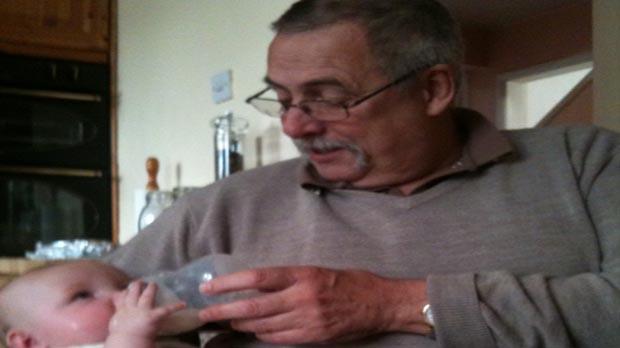
“I think it’s essential that people keep signing up to these type of trials to push research forward.”
This was a study to see if a device called Endocuff Vision made it easier to find adenomas during a procedure to look inside the bowel (colonoscopy).
 are growths inside the bowel. Most bowel cancers start when a type of polyp called an
are growths inside the bowel. Most bowel cancers start when a type of polyp called an  becomes cancerous.
becomes cancerous.
This study was open for people to join between 2014 and 2016. These results were published in 2018.
Doctors use a colonoscopy to look inside the bowel to find polyps. They pass a thin, flexible tube with a camera at the end into your back passage and up into your bowel. The tube is a colonoscope.
There are a number of reasons people may need to have a colonoscopy. These include people who:
The doctor or nurse doing the test can see the polyps and remove them if necessary. Removing these growths reduces the risk of bowel cancer.
In this study, some people had a standard colonoscopy. And some had a colonoscopy with a device called an Endocuff Vision attached to the end of the colonoscope. This could make it easier to see and remove polyps. It helps by holding back the folds of the bowel to give a clear view.
The main aims of the study were to find out whether the Endocuff Vision device:
The team found the Endocuff Vision device did increase the number of adenomas that were seen.
About this trial
This was a randomised trial. Everyone was put into 1 of 2 groups. Neither they nor their doctor chose which group they were in.
1,772 people took part:
Of the 1,772 people, 797 (45%) had a bowel screening test done before they had joined the trial:
Results
When the trial team looked at the results they based it on what colonoscopy people were due to have and not which one they actually had. This is called an  . Doing this means the results they get are better, clearer and fairer.
. Doing this means the results they get are better, clearer and fairer.
The trial team compared the standard colonoscopy with the Endocuff Vision colonoscopy.
They found that 683 people had at least 1 adenoma in their bowel. This was:
The research team then analysed the results in more detail.
They looked at the 797 people who were having a colonoscopy because a test on their poo had shown it contained some blood (FOB+). In this group, more people who had the Endocuff Vision colonoscopy were diagnosed with at least 1 adenoma. It was:
They also looked at 975 people who hadn’t had a test that showed they had blood in their poo (FOB-). The number of people who were diagnosed with an adenoma was the same in each group:
What people thought about the test
The team asked people about the discomfort caused by putting the tube up the back passage. They found that 76 people (8.6%) reported some discomfort using the Endocuff Vision device. For all other measures of comfort they found that it was the same as for the standard colonoscopy.
Conclusion
The trial team concluded that the Endocuff Vision device:
They recommend the Endocuff Vision device is used for people who need a colonoscopy because they have a higher chance of having an  . An example is people who have had the screening test showing a small amount of blood in their poo.
. An example is people who have had the screening test showing a small amount of blood in their poo.
Where this information comes from
We have based this summary on information from the research team. The information they sent us has been reviewed by independent specialists ( ) and published in a medical journal. The figures we quote above were provided by the trial team who did the research. We have not analysed the data ourselves.
) and published in a medical journal. The figures we quote above were provided by the trial team who did the research. We have not analysed the data ourselves.
Please note: In order to join a trial you will need to discuss it with your doctor, unless otherwise specified.
Professor Colin Rees
ARC Medical Design Ltd
NIHR Clinical Research Network: Cancer
South Tyneside NHS Foundation Trust
If you have questions about the trial please contact our cancer information nurses
Freephone 0808 800 4040

“I think it’s essential that people keep signing up to these type of trials to push research forward.”